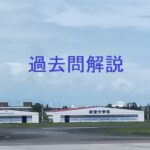I’m J.
I work as a pilot in a Japanese company.
There are many examples of Japanese pilots who have been punished for taking pictures of the view from the cockpit and uploading them to social networking sites.
However, if you look at Twitter, Youtube, etc., there are many such images and videos, but they are all from foreign countries.
Complaining is not constructive, so I will present how to solve this problem.
Legal Basis
First, the legal basis.
Article 71-2 of the Civil Aeronautics Law includes a section titled “Pilot’s Obligation to Keep Watch”.
Specifically, it is as follows
(Pilot’s duty to keep watch)
Article 71-2
Any person piloting an aircraft(Any person who is piloting an aircraft for the purpose of practicing pilotage of the aircraft or practicing instrument flights, etc. If an instructor supervising a trainee is on board, the instructor is subject to this regulation.) shall, while navigating the aircraft, keep watch to prevent collision with other aircraft or other objects when the aircraft is under weather conditions that make it impossible to see objects outside, regardless of whether the pilot is navigating in compliance with instructions from the Minister of Land, Infrastructure, Transport and Tourism under the provisions of Article 96 paragraph (1).(Quoted from Article 71-2 of the Civil Aeronautics Act)
Some technical terms are mixed in, but in plain English
That is what it means. It seems to me that it only says the obvious.
Some technical terms are mixed in, but in plain English
Unless the pilot is in a cloud, etc., and cannot physically see out, he or she must keep a lookout to avoid colliding with other aircraft or obstacles during any type of flight.
That is what it means. It seems to me that it only says the obvious.
It is not a clause that says you are not allowed to take pictures, so taking pictures itself is not prohibited.
For example, there is no problem for a third party who is not the pilot to get in the cockpit and take pictures. This is because that person is not obligated to watch the outside of the cockpit.
Interpretation of the text of the article
ここからは先ほど挙げた条文の解釈の問題です。
一般的に、法律の条文はひとつでもその条文の解釈は複数存在します。
写真を撮ることが見張りをしていないと解釈もできますし、写真を撮る時には外も見ているので見張りは怠っていないという解釈もできます。
今のところ国土交通省航空局の本条文の解釈は「飛行中の写真撮影は見張り義務違反に当たる」という解釈です。
写真撮影以外の行為の解釈は以下の通りです。
「操縦しながら食事をとるのは見張り義務違反に当たらない」
「飛行中にマニュアルを読んだり、カバンからマニュアル等を出し入れするのは見張り義務違反に当たらない」
「トイレに行くのは見張り義務違反に当たらない」
という解釈です。
矛盾を感じるのは僕だけでしょうか。
晴天で揺れもない巡行中、オートパイロットで飛びながら外の景色をスマホを出してパシャっとするのに10秒もかからないですが、その10秒で何かあったらいけないということなのでしょう。
食事やトイレは結構目を離しますがそれは良いのでしょう。
逆に欧米などは合理的なので「飛行中の写真撮影は常識の範囲内であれば見張り義務違反に当たらない。その代わりそのせいでなんかあったら個人が責任取ってね」という考えなのでしょう。
ジャパニーズの解釈に対して「そんなことを言ったら食事もトイレもアウトやん!」と言いそうです。
解釈を白黒つける良い方法
それぞれの解釈を書いたところで意味はありません。
しかし、解釈を白黒つける方法があります。
裁判です。日本は法治国家であり、誰もが裁判をする権利が保障されています。
航空法第71条の2の解釈についての裁判例を見つけることができなかったのでまだ誰もやっていないということなのでしょう。
まず、見張り義務違反として処分された事案に対してその処分は不当だという裁判を起こします。処分の根拠は航空法第71条の2なので、当然その解釈を争うことになります。
海外では当然のようにSNSに写真が挙げられているがそれが原因の事故が起きていないことや、写真撮影の他に食事やトイレなどでは操縦業務を妨げることはないことなどを主張していきます。
最終的に最高裁判所が出した判決がどちらの判決であっても意味があります。
もし、「飛行中の写真撮影は見張り義務違反に当たらない」という判決が出た場合、今後飛行中の写真撮影は違法行為ではないということになります。最高裁判所の解釈なので航空局も航空会社も今の解釈を変えざるを得ません。
また、逆に「飛行中の写真撮影は見張り義務違反に当たる」という判決が出た場合は、正式にそれが違法行為として局の解釈が裁判所のお墨付きを得ることになります。
航空業界は最高裁判所が出した判例を元に色々整理してそれを元に処分を決めることになります。
法治国家である以上、それが正しい手続きであり従わなければなりません。
個人的には、現在のような航空局の役人の勝手な解釈で処分されるよりも裁判所の解釈での処分の方が納得感があります。
それが嫌なら日本から出ていくしかありません。
それだけではありません。裁判の中で、写真撮影がなぜ見張り義務違反に当たるのかといった説明やはっきりとした基準が示されれば、写真撮影以外の食事やトイレにも制限・影響が出てくる可能性があります。
いずれにせよ、はっきりと結果が出るのでモヤモヤが無くなります。




